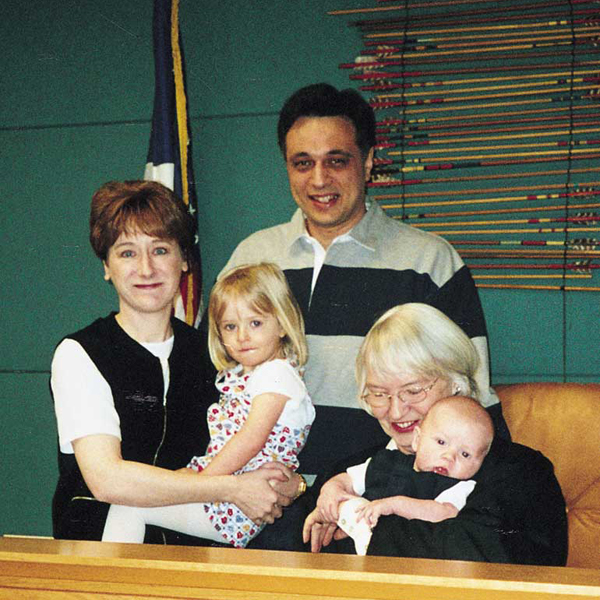After focusing for several months on homestudy paperwork and the details in our “Dear Birth Parent” letter, entering the waiting pool with our agency seemed like a letdown. Now there was nothing left to do but wait — or so it seemed.
Coincidentally, twice early in our waiting period, two speakers at separate events read from Dr. Seuss’ Oh, the Places You’ll Go. The rhythmic words lodged inside my head, “…or the phone to ring, or the snow to snow or waiting around for a Yes or No…Everyone is just waiting…No! That’s not for you!”
The universe was trying to tell me something. Waiting was definitely not for me.
Tucking the wisdom of Dr. Seuss under my belt, I decided to empower myself by taking charge of the wait rather than letting the wait taking charge of me. I did it even though we were working with a private agency that was already networking on our behalf.
As first time adopters, we were unsure of ourselves and of the whole adoption process. We were not prepared emotionally to handle direct inquiries from birth families; it would feel too much like soliciting a baby.
Now the question became how to empower myself when I was full of doubts, where to start in the vastness known as waiting.
In talking to other adoptive families and educating myself through reading of many books and magazines such as Adoptive Families, the answer came back: support, support, and more support — from family and friends, agency, coworkers and community. I developed a multi-pronged approach to waiting to adopt: support, networking, nurturing, and action.
Support is Essential
Despite the fact that my husband and I are private, even shy people, we joined a local adoptive families support group. It was the best thing we did. We attended meetings with other waiting families and larger functions with guest speakers on adoption topics.
It was a place to share our ups and downs, fears, hopes, and, eventually, joys. On occasion, it was also a place to whine about our agency and its bureaucracy. Today we are still active members of the group, and I am currently on its board of directors.
During this time, we also attended every support meeting held by our agency. We felt this was the best way for the agency to get to know us and for us to get to know them. This would become important later on as we entered mediations with birth families.
Adoption is a complex and often misunderstood process. Support from those who have been there and done that or those who are in the trenches with you is invaluable.
Networking
With our first adoption, networking consisted of letters to my family doctor, ob/gyn, and local church. In each letter I included information about our agency and our own “Dear Birth Parent” letter.
I asked family and friends who had provided reference letters for our homestudy to give me the names of their doctors, clergy, and school counselors. With their permission I dropped their name as my point of reference.
During our second adoption, I added public health nurses and community-based family aid organizations to my contact list. Boldly, but with some trepidation, I posted a flyer on my car and one at my local grocery store.
Although the flyer on my car never generated any direct leads, it certainly generated conversation. Along with my “consider adoption another option” window sticker, it brought me a few more honks than usual.
Nurturing
The most difficult part of my plan was nurturing. My fear of spending money set aside for adoption expenses provided overwhelming guilt over unnecessary purchases. Small luxuries, such as morning lattes, and big ones, such as vacations, were scrutinized with equal concern.
During our second adoption journey, I fell in love with a beautiful dining room set, just after a potential adoption fell through. Its rich colors and fine curves called to me, along with its fantastic sale price. Even though we had wanted one for some time, we had agreed that it could wait until after our adoption.
But my urge to fill the emotional gap left by the disappointment of a lost adoption opportunity was greater than the practical decision to save money. I bought the dining room set anyway and tried to laugh off my anxiety by saying, “Hope the next birth family doesn’t ask for any extraordinary expenses. If they do, perhaps they’ll settle for a dining room set.”
It’s a challenge we all face during waiting to adopt — the task of balancing today’s lives with our needs and hopes for the future. Big or little, sometimes our individual needs must come ahead of those in the adoption process.
Taking Action
I needed something hands-on to do during this phase. To build our confidence and baby care skills, we enrolled in a newborn care class at a birthing education center.
I first called a local hospital, explaining our situation in great detail. But this particular hospital was not set up to handle adoptive-parents-to-be.
The staff insisted that we take their complete course, including Lamaze and labor and delivery classes, at full expense, no exceptions. I was not ready to practice breathing techniques in a room full of pregnant women.
Instead, I found another birthing education center more experienced with pre-adoptive parents. There we were able to take only the courses which interested us. The non-adoptive parents were supportive, and the instructor even added specific material for us.
She spent more time on general baby care than on topics (such as breastfeeding) which were not as applicable to adoptive parents. Looking back, I now think that a labor and delivery class might have been useful — I ended up as labor coach for our son’s birth mother (our second adoption) and was unsure of how to do it.
Finally we decided, as a sign of hope, to move ahead and prepare the nursery. We did the work slowly over time, adding warm yellow walls, a Winnie-the-Pooh wallpaper border, and a hand-me down crib that my sister’s youngest had just outgrown.
Somehow we knew there would be enough chaos at the end of the wait to keep us busy and that preparing the baby’s room would be easier now than later. I often sat in the room alone and imagined the sounds of soft giggles bouncing off the bright walls.
A smile would cross my face. I would believe again that one day this waiting process would end, and everything would fall into place.
Many experienced adoptive parents had told us, “When it is meant to be, it happens.” The phrase seemed trite and irritating, but suddenly the time was right and the waiting was over.
The waiting seemed endless, but it was only a small part of a greater journey, the journey that will last a lifetime.






